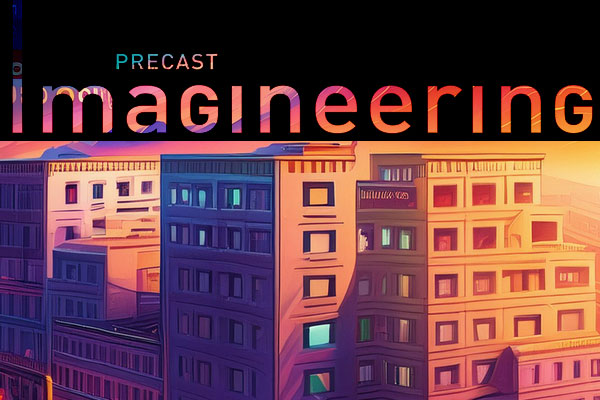Schwartz Reisman Innovation Centre
Facade cladding design conforms to canted exterior
By Weiss/Manfredi and Teeple Architects
As the University of Toronto’s flagship for innovation and entrepreneurship, the Schwartz Reisman Innovation Centre provides an incubator for start-up companies and researchers in the fields of artificial intelligence and other emerging technologies, through the Vector Institute of Artificial Intelligence, and for many health-related startups, working in partnership with similar facilities in the neighbouring MaRS research centre and the various hospitals in the area.

Located in the City of Toronto’s Discovery District on the eastern edge of the U of T campus, the Centre contains a group of public engagement and shared spaces on the lower floors, including large event spaces, instructional rooms, seminar rooms and an exhibition lobby, all to encourage collaboration and build a community of innovators.
Two multi-storey winter garden spaces on the 7th and 10th floors provide additional informal collaboration and presentation areas for all building users and views to the city core and the adjacent Ontario Legislature buildings. The dynamic tapered form of the building acts as the east half of an informal gateway to the campus and to the Queen’s Park area. The U of T tenant spaces include a mixture of private and open office areas, meeting rooms, wet and dry labs and shared collaboration areas.

Approximately 100,000 square feet is available for future tenants working in similar fields to the U of T users. These areas are interspersed throughout the building to encourage further synergies for the development of innovative products and services. The building cladding is an innovative design, interpreting a variety of facade elements from other institutional buildings in the area, designed to assist in reaching the overall University goal to reduce energy use to 20% or more below ASHRAE-2013.
The overall sustainability target is equivalent to LEED Gold; strategies include radiant floor heating, solar PV, highly reduced lighting loads due to the excellent daylighting opportunities achieved through small floor plates, heat recovery and storm water capture and reuse.
WEISS/MANFREDI IS THE DESIGN ARCHITECT, AND TEEPLE ARCHITECTS IS THE ARCHITECT OF RECORD.
Making the facade
By Justin Porzio
The Schwartz Reisman Innovation Centre is composed of two towers. With their slightly canted exterior walls, the towers mark a departure from the usual orthogonal architecture which dominates most cities. Terracelike openings break up the considerable bulk of the large structure. At street-level, transparent storefront glazing diminishes the barrier between indoors and out.

While the Centre's facade appears repetitious, it is composed of parametrically-derived precast concrete panels that shift to accommodate the taper of the building’s form and the repetition of custom, high-performance window units. The panels span floor to floor 4.1m (13ft-7in.) and are monolithic with a 127 mm (5 in.) base tapering up to a 152 mm (6 in.) projection. Breaking with conventional methods, the project team used a computer numerical control (CNC) machine to achieve the precise angles and slopes of the precast concrete panels.

“The CNC machine cut each of the forms out of plywood, using nearly every square inch of the sheet, leaving little to waste. Corresponding instructions were developed to aid the carpenters as they assembled the forms for fabrication. Working with our 3-D model, the precast concrete producer built each individual form with varying angles, slopes, and heights. Utilizing the CNC machine created nearly 300 different types of forms to cast the 890 precast concrete architectural panels,” says Sebastian Arangio, project manager, TKL Group. A retarder was applied to the formwork and then acid washed to achieve the desired finish. To transport the panels from the precast concrete plant to the site, trailers had to be retrofitted to accommodate their unique shapes.

After the successful completion of the first tower in 2021, a second phase will consist of a 46,450 square metres (500,000 square feet), 20-storey tower that will house laboratories for regenerative medicine, genetics, and precision medicine to maintain the Centre’s purpose of enabling the University of Toronto’s innovation and entrepreneurship network.
JUSTIN PORZIO IS QUALITY CONTROL MANAGER AT TKL GROUP INC.
PRECAST CONCRETE FAÇADE SUMMARY
- With the help of a CNC machine, nearly 300 different types of forms and 890 precast concrete panels were produced to accommodate the taper of the towers.
- While not completely standard, the exterior panels do repeat from floor to floor and from elevation to elevation.
- The white precast concrete cladding has an acid-etched finish.
Photos by TKL Group Inc.
- OwnerUniversity of Toronto
- ArchitectTeeple Architects Inc.
- ArchitectWeiss/Manfredi
- Precast SupplierTKL Group Inc.
- ContractorEllisDon
- ContractorPrecise Detailing Inc.
- Structural EngineerCole Engineering Group and M.E. Hachborn Engineering

Imagineering Magazine
View our latest issue of the popular Imagineering Magazine.
